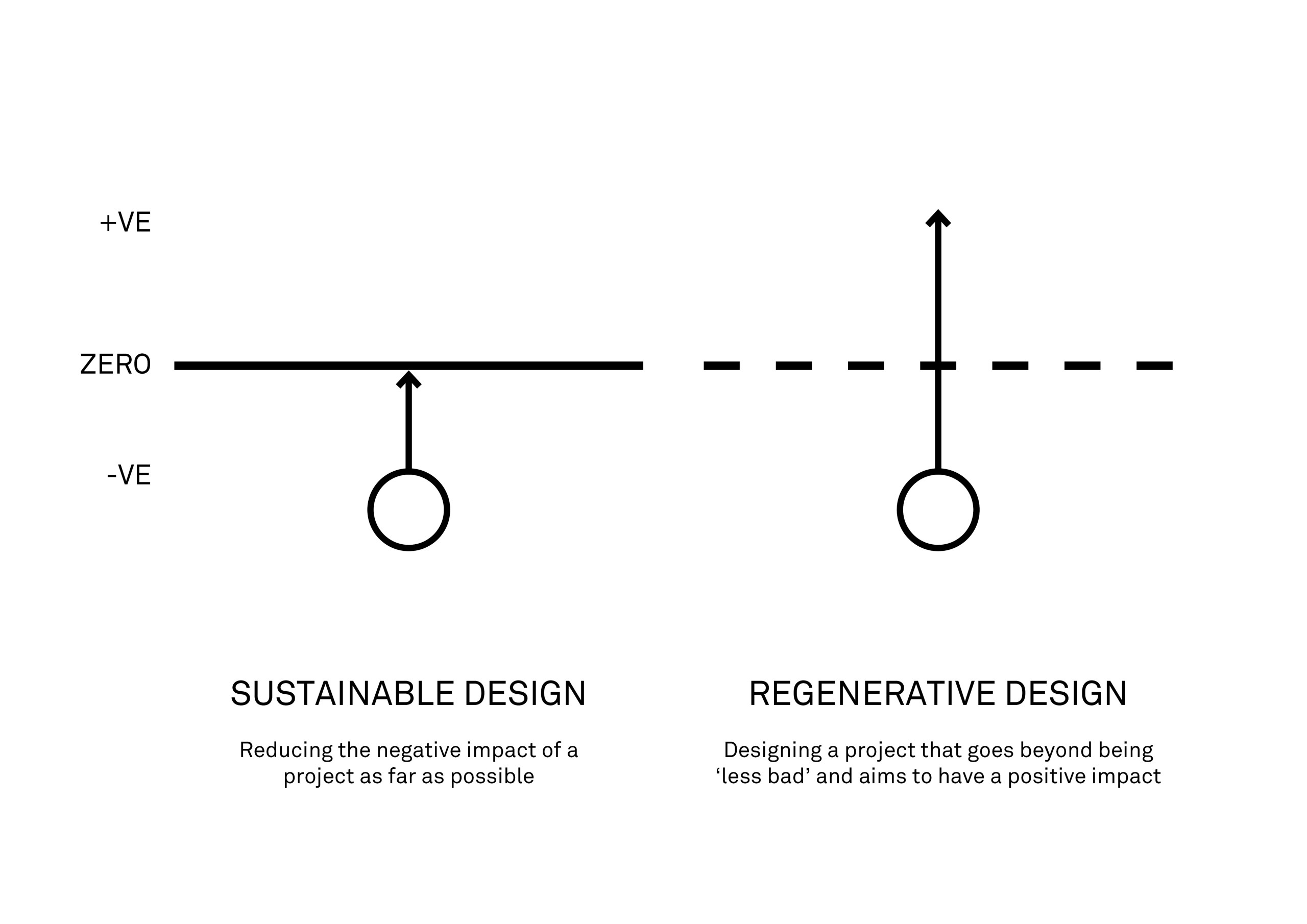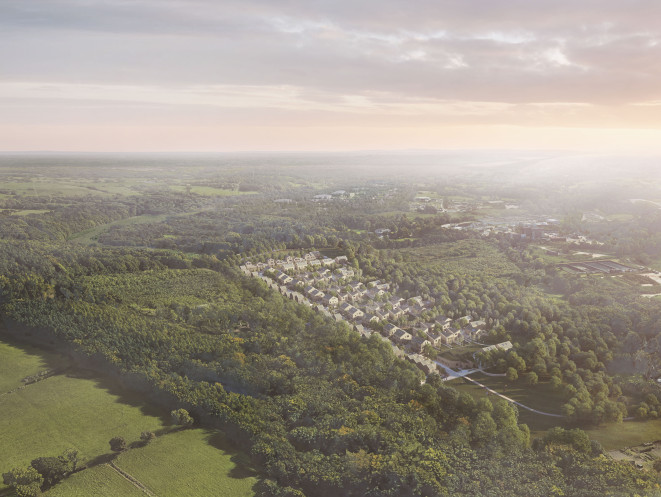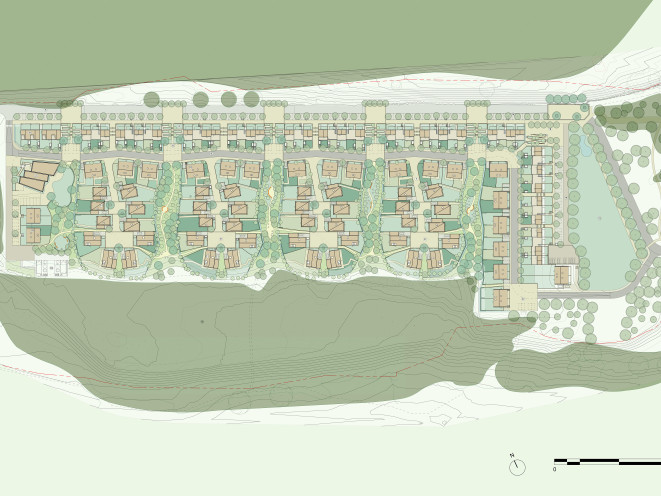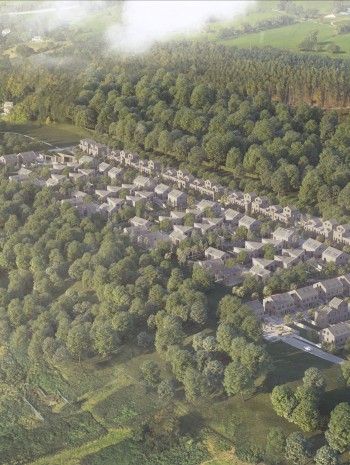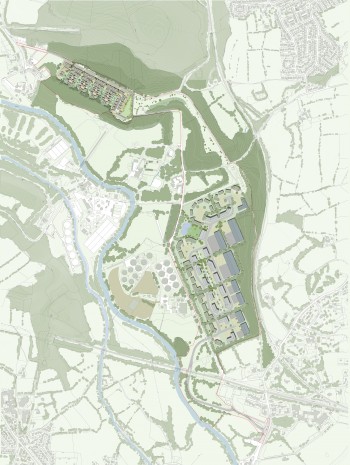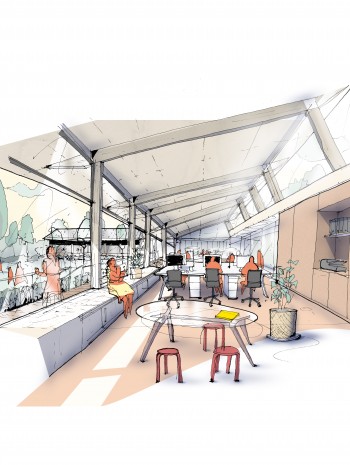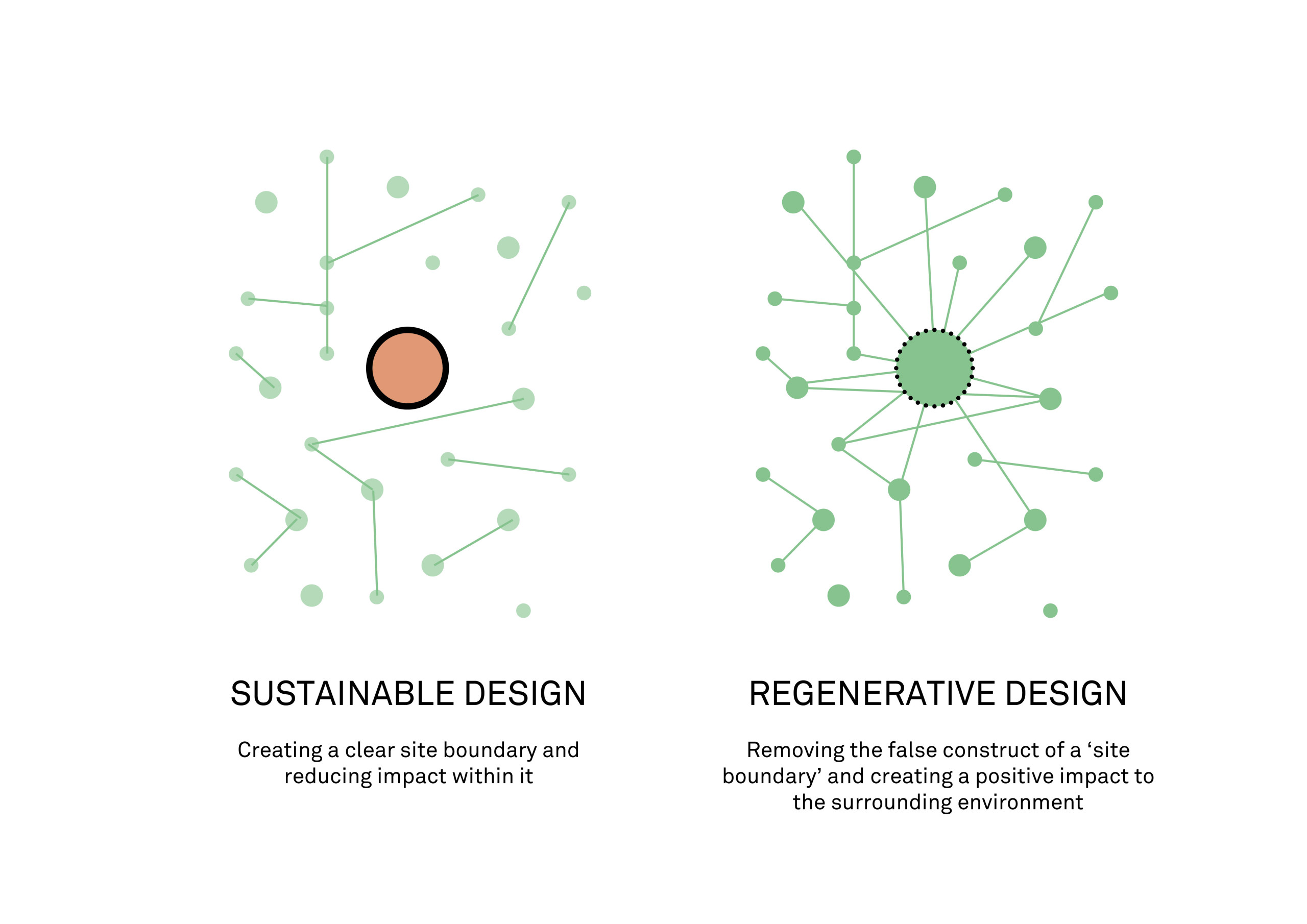
Have you been wondering what Regenerative Design is? And if it’s something you should be considering in your construction project?
In this article, we explain some of the key differences between sustainable design and regenerative design. We’ve then set out some of the lessons we’ve learned from working on regenerative design projects. Hopefully then you’ll be able to decide for yourself if it’s something you want to consider for your project.
What is the difference between Sustainable Design and Regenerative Design?
To answer this question, it’s important to first consider what we mean by sustainable design. The concept of sustainable design is to develop a site in a way that reduces the harm caused by this development to the surrounding environment – essentially aiming towards a zero impact, both in construction and operation. This approach allows us to fulfil the needs of our current generation, without compromising the health of our natural environment further for future generations.
The problem with this approach is that it ignores the crisis that we have already created in our natural environment. To compensate for this existing damage, we may need to push beyond a ‘neutral’ or sustainable approach and instead target a positive impact on our surroundings.
Regenerative design aims to do just this. Some of the approaches have similarities with sustainable design, but the goals are more ambitious and use a more integrated system. The ambition is to create good outcomes for the wider environment rather than simply minimising the bad outcomes of a project. Regenerative design is the acknowledgment that we are connected with our surroundings, and it is possible to create actual positive outcomes through forward thinking and good design.
Regenerative design starts at the outset of a project and takes a whole-systems approach. It integrates and balances the needs of society and humans with the needs of the natural world. The design of these systems is then used to create a project that is regenerative to its environment across a wide range of aspects. The concept takes a project and places it within its eco-system, understanding that it does not exist in isolation and that its effects are wide felt.
Measuring your impact
One of the key questions you might be asking is, how can I measure all the different aspects of a project to understand what impact we will have? The Five Capitals approach is a framework that allows companies to report their outcomes in more than just a straight financial way. An adaption of this reporting has become an increasingly common way of measuring the outcomes of regenerative construction projects. The Five Capitals method splits all the project’s outcomes into five key areas that can be measured; Manufactured capital, Natural capital, Social capital, Human capital and Financial capital.
We have used a similar approach at our masterplan project at Esholt for Keyland Development. In this project we worked with consultants 3Adapt to split each capital into a series of key measurable outcomes. For example, within the Natural capital we included a KPI for improvement of Biodiversity Net Gain across this site, and within the Human capital we developed metrics on how much daylight people who lived in the houses would get per day. These measures helped us to develop the design. The idea is that you measure and creative a positive impact on each capital across your project.
Having a good design is also important
A clear and structured framework, such as the Five Capitals, can help to measure regeneration across a whole series of different criteria. But it’s equally key that these are developed alongside a thoughtful and intelligent urban design. Without this you run the risk of creating a truly excellent technical exemplar of regenerative design, but also somewhere that people don’t really want to live, work, or play.
Small change
Many aspects of a regenerative design project don’t require complicated reports or analysis. It’s also about recognising that everything’s connected and identifying where a seemingly small interventions can make a big difference.
In our project, Esholt Positive Living, as existing it was very difficult to walk from the railway station to the site. So, just by connecting one small bit of footpath, everyone who lives in the neighbouring village can now walk to the train station, rather than having to drive a huge loop to get to the car park. That small change made a big difference, not just to our project, but also to the local community, and reduced the overall carbon emissions by reducing the number of cars on the roads.
Engaging with the local community is key to this. You can do a lot of research finding out about the areas that surround your site, but talking to the people who live there is an excellent way of identifying some of the key issues that you can improve with your project.
Should you incorporate a regenerative design strategy into your project?
Regenerative design is a complex and wide-ranging topic. There are many different opinions on how best to integrate it into a design, and it is still evolving as a concept. However, it is important to remember that regenerative design is primarily a change in mindset.
It’s possible to include regenerative design thinking into your project whatever the scale you are working at. The type of strategy you take and how much this influences your design and delivery process will differ depending on the constraints of your specific project.
You might find the Five Capitals a great way to monitor all the impacts of a masterplan on its environment. But equally, it may be that isn’t appropriate for you to develop this kind of wide framework to measure all your impacts of a tight urban intervention, and instead you could think about some of the small changes you can make to push one part of your project from being ‘just sustainable’ to ‘net positive’.
It’s likely that some form of regenerative design thinking could work for your project, but how you incorporate it, how comprehensive it is, and what form it might take is for you to answer.
Laurence Pinnfire
Director

Laurence joined Tate+Co in 2011. He is design-led yet blends this with a practical understanding of development to ensure concepts can become a reality. Laurence has been the project architect for many significant projects at the practice including the Eden Canopy Walkway and the Brunel Museum Reinvented project, re-opening Isambard Kingdom Brunel’s first ever structure for use as a performance space.
Laurence graduated from Nottingham University with first class honours and received a distinction for his Part II at Westminster University before completing his Part III certificate at RIBA Northwest. He has previous experience working in a number of other London based practices including Hopkins Architects, where his work included a residential project for Rice University, Texas.
Laurence has a particular interest in regenerative design and has taken part in talks and written articles on the subject. In 2015, Laurence was awarded the AKT II Architecture prize at the Royal Academy Summer Exhibition for his Urban Floral Propagation field box.

